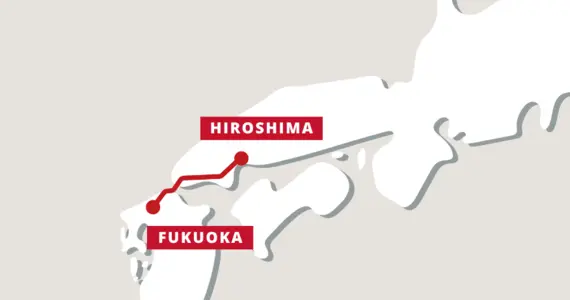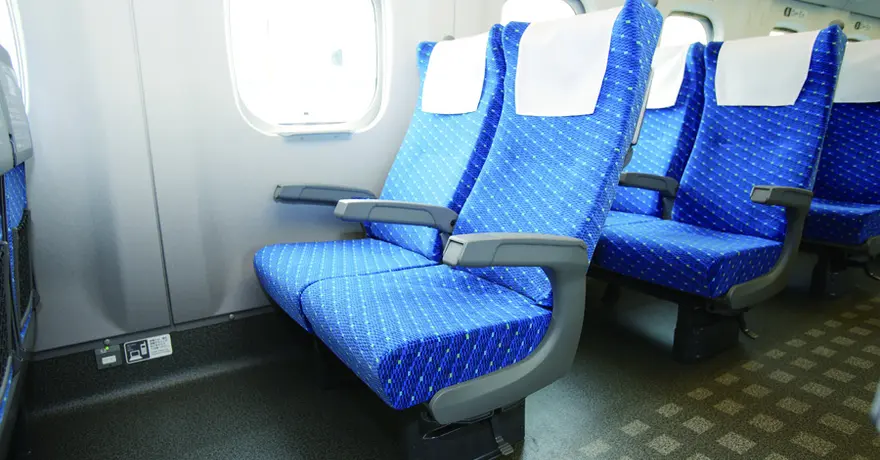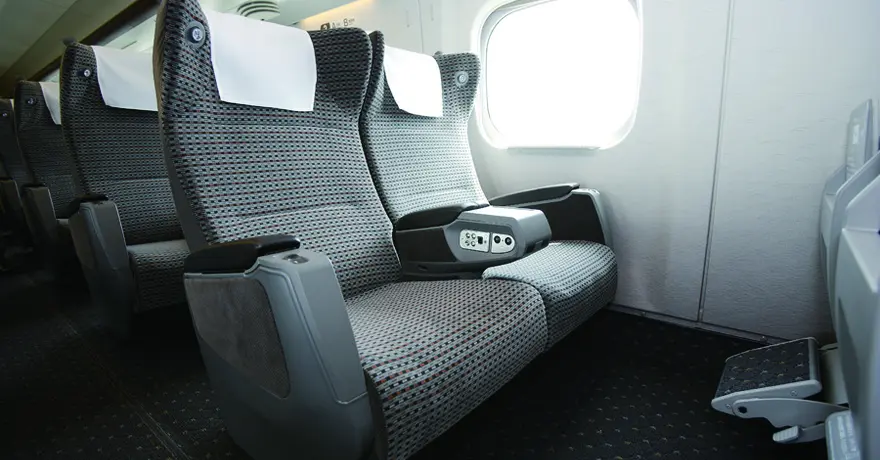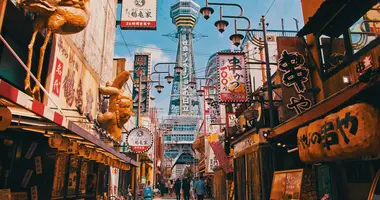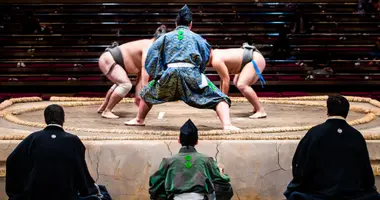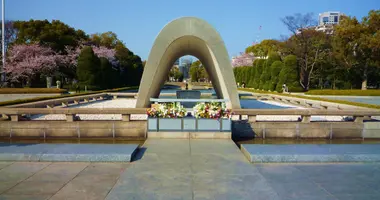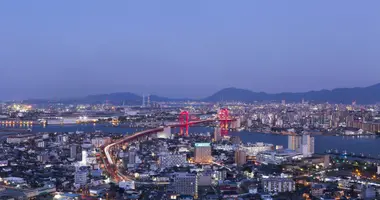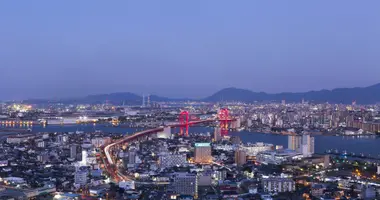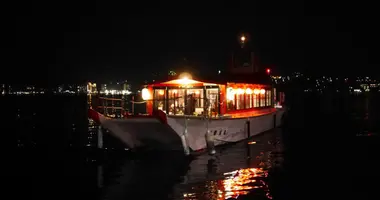Train Tickets from Fukuoka (Hakata) to Hiroshima
Official train tickets seller
Choose your preferred seat
7/7 Assistance
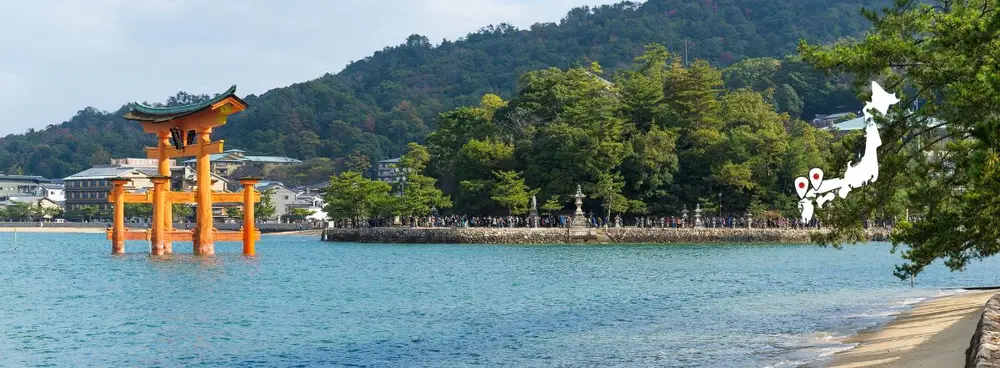
Travel conditions
Ticket type
Passenger information
Seating options
Luggage conditions
Buy your train tickets in Japan in 3 easy steps
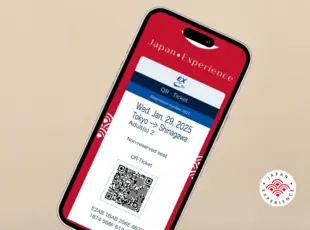
Choose and buy your train tickets for your preferred travel date
Receive your e-ticket one month before departure
Scan your e-ticket in train stations in Japan
Trains in Japan: what does it look like?
What our customers say about us
Travel advice from our Japan train expert
Traveling by train in Japan
Japan has a well-developed rail system that serves as a practical way to travel both locally and across the country. As a result, both locals and tourists often find themselves using trains almost every day, whether it's local lines or the famous Shinkansen bullet trains. For first-time visitors to Japan, the importance of train travel during their trip is likely to be a consideration.
Although train travel is very common in Japan, there are a few things that first-time visitors should know or prepare for before they board. This is true even for those coming from countries where train travel is already popular.
Why are trains so popular in Japan?
Japan's rail system is among the best globally. Riding the train in Japan can be described in three words: efficient, fast, and clean. Until you experience it, it's hard to grasp how easy and remarkably convenient train travel is in Japan. Even with millions of passengers daily, trains remain clean, punctual, and well-maintained. For many, this may seem like a dream compared to the train services in their own countries.
There are numerous reasons for this amazing railway system, but it mainly comes down to Japan's dependence on imported fossil fuels, which led the country to invest significantly in its train transportation network. Since the late 1800s, train companies in Japan have been constructing lines to transport people and goods efficiently from one place to another, and as a result of this extensive network, cities started to develop around train stations. While much of Western urban development has centered on car-based infrastructure, Japan primarily expanded its urban areas around train stations. In most Japanese cities, train stations serve as the economic and demographic hubs of the city.
With proper investment in its train system, Japan has successfully established one of the most dependable, fast, and safe rail networks globally!
Different types of Shinkansen available
There are four different kinds of Shinkansen trains that passengers can take to get from Fukuoka to Hiroshima: Sakura, Kodama, Hikari, and Nozomi. The fastest option, the Nozomi, is more expensive and functions as an express service. It should be noted that reservations are required for all Nozomi Shinkansen trains.
Onboard amenities such as power outlets, overhead storage, and reclining seats are available to customers traveling by train. From Fukuoka to Hiroshima, taking the Shinkansen guarantees efficiency and comfort. To purchase a train ticket that best meets your needs, it is advised to investigate all of your alternatives for seats and cars.
How to get to Fukuoka Station
Situated at the center of Fukuoka, Hakata Station is a major transportation hub that offers an extensive network of public transit services. Serving as Fukuoka's main Shinkansen train station, it is essential for both arrivals and departures. Many JR lines connect Hakata Station, including the Hakata-Minami Line of JR West and the Fukuhoku-Yutaka Line of JR Kyushu, as well as the Kagoshima Main Line. Hakata Station is also the hub for the Fukuoka International Airport and Nanakuma metro lines, as well as a number of bus routes and airport transfer possibilities. These vast transit systems provide easy access to travel throughout Fukuoka, the city, and the neighboring prefectures and areas.
Hakata Station is very close to the airport, so it's very easy and convenient to go straight from a flight on one of the many airlines servicing Fukuoka into the Shinkansen if you're arriving in Fukuoka from the Okinawa Islands or any other destination.
Where to go from Hiroshima Station
Utilizing Hiroshima Station as a base of operations, a large portion of the city is reachable! Only a short eight minutes' walk from the station itself is the Toshogu Shrine, which offers insight into the rich history of the city. Other lines, such the Geibi Line and Sanyo Line, are excellent for getting about the remaining Chugoku area. The station serves as the terminal for the Hiroden Trams, the vintage trams that are associated with Hiroshima in general.
